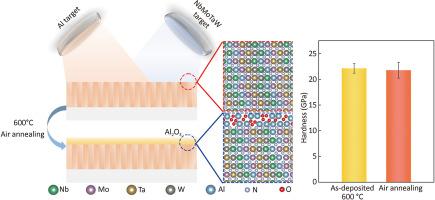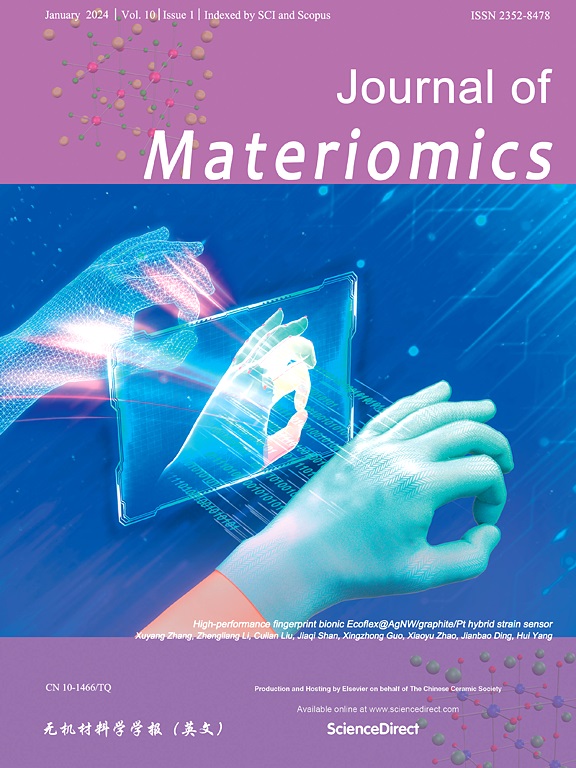Component regulation and high-entropy engineering for enhanced antioxidant and high-temperature mechanical properties of protective films
Abstract
Transition metal nitrides (TMNs) have gained widespread application in protecting structural components due to their high strength and hardness. However, TMNs still have the challenge of structural instability and mechanical deterioration caused by oxidation under harsh high temperature conditions. Herein, we present a strategy combining component regulation with high-entropy engineering to develop an advanced high-temperature Al-containing high-entropy nitrides (HENs) material. To prevent the phase decomposition of AlN within the (NbMoTaWAl)N, theoretical simulations were employed to determine a critical atomic percent of 25.0% Al for maintaining the stability of the high-entropy structure. Ensuing experimental synthesis creates three NbMo
Ta
W
Al
N films with varying Al content: a high-entropy film with 0.0% Al (HEN), a high-entropy film with 21.2% Al (HEN-Al), and an amorphous transition metal nitride film with 30.2% Al (a-TMN-Al), validating key high-entropy engineering benchmarks. It is found that the unique HEN-Al film exhibits excellent oxidation resistance and high-temperature hardness, attributed to the uniform distribution of Al atoms in the robust high-entropy structure, which creates conditions for forming a dense and continuous Al2O3 barrier layer, effectively hindering the diffusion of oxygen into the film interior. This study provides new insights to develop a new generation of high-temperature protective materials.


 求助内容:
求助内容: 应助结果提醒方式:
应助结果提醒方式:


